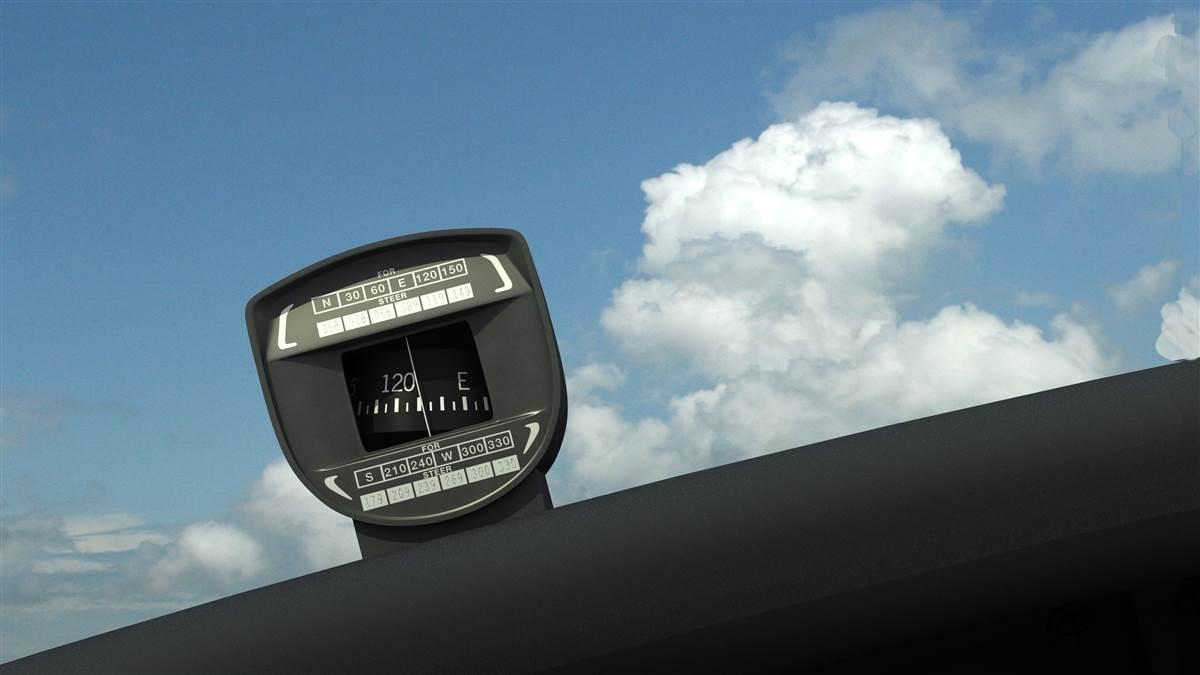
Not that long ago, navigation was done only with a map, a pencil, an E6B, a watch, and a wet compass. The “wet” compass, which gets its name because of the fluid it contains (similar to kerosene) to dampen any oscillations, doesn’t require electricity or any other mechanical support, but it does have its drawbacks. It is prone to a number of errors, many of which are a result of the magnetic fields it relies on to provide reliable heading information. But with a little knowledge, the compass is still the most dependable instrument in the airplane.
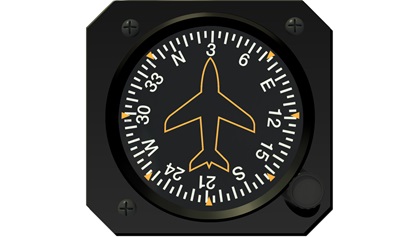 Vertical card compass
Vertical card compass
Many aircraft owners choose to replace the wet compass with a vertical card compass. This instrument displays the compass card vertically, and looks somewhat like a heading indicator or directional gyro. Although the vertical card compass indications are truer than the wet compass, it is still prone to a few errors, including a tendency to oscillate, and some turning error. Variation
Variation
The Earth rotates around the geographic poles, which also serve as its physical axes. Lines of longitude and latitude are based on the poles, and the charts are oriented to these points as a result. The magnetic north and south poles in comparison aren’t collocated at the geographic poles, but rather some 1,300 miles away. The difference between the geographic poles and the magnetic poles is called variation. To properly navigate with a chart, magnetic variation must be calculated. Isogonic lines on the charts indicate the local variation. If east, the degree difference is subtracted from your true heading, and if west the difference is added.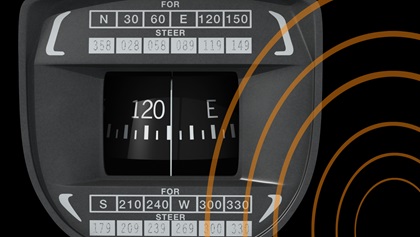 Deviation
Deviation
Because the compass relies on fixed magnets within its housing to indicate direction, metal within the airplane can skew the true number. So can radios and other electrical equipment in the aircraft. This difference is deviation, and the numbers are different for each airplane. A mechanic will test the airplane by pointing it at a few defined headings, and then note the compass reading. The deviation will then be noted on a card, which is mounted on or near the compass, indicating the difference between magnetic heading and compass heading.
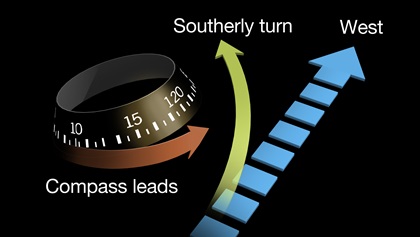 Turning error
Turning error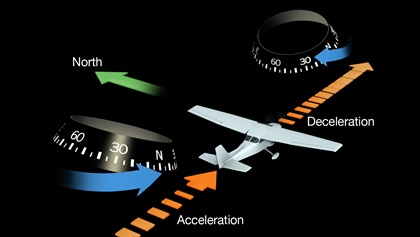 Acceleration error
Acceleration error


